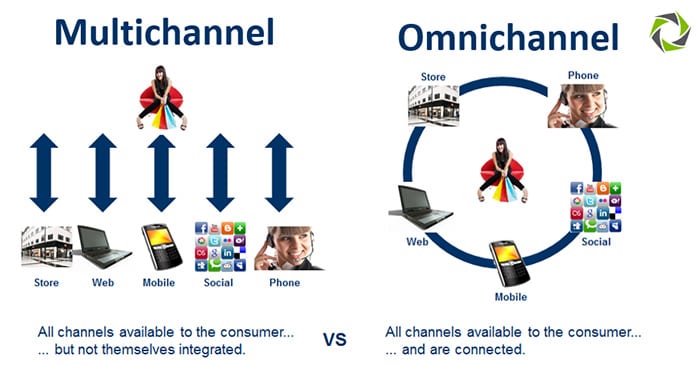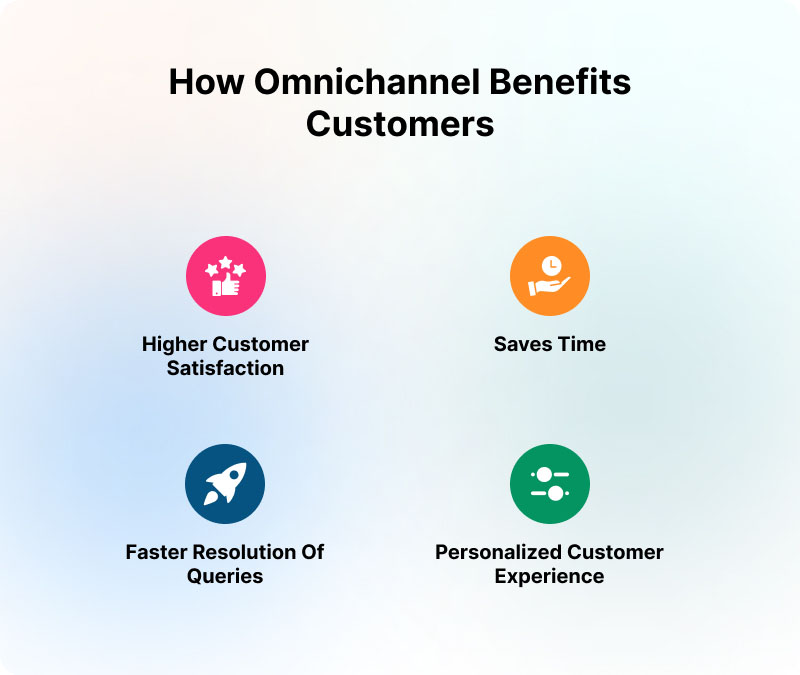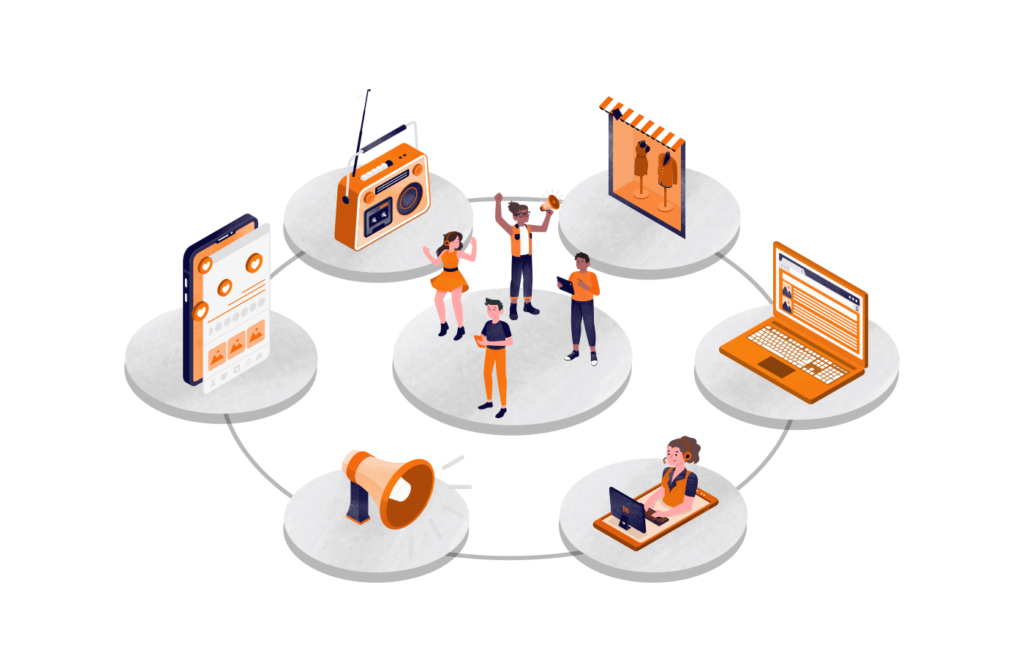How does omnichannel marketing work? Businesses are constantly looking for novel ways to engage with their customers in the quickly changing digital landscape of today. The days of attracting consumers’ attention with just one marketing channel are long gone. The idea of omnichannel marketing was created because of the development of technology and the spread of numerous platforms and devices.
A seamless and integrated customer experience across various channels and touchpoints is the goal of the strategic marketing strategy known as omnichannel marketing. It involves aligning messaging, branding, and customer interactions across online and offline channels, which goes beyond simply being present on various platforms. Businesses can effectively reach and engage their target audience by utilizing omnichannel marketing, regardless of whether they are browsing a website, using a mobile app, or going to a physical store.
We will discuss various facets of omnichannel marketing in this comprehensive guide.
You may like: Growth marketing vs demand generation which is better
What is Omnichannel Marketing?

A seamless and integrated customer experience across various channels and touchpoints is the goal of omnichannel marketing. Customers must have a consistent and cohesive brand experience regardless of the channel they use to interact with a business—online platforms, offline locations, mobile devices, social media, etc.
Regardless of the channel being used, omnichannel marketing aims to ensure consistency in messaging, branding, and customer service. It acknowledges that consumers today expect a seamless experience as they switch between various channels and devices, and it tries to live up to that expectation.
Utilizing a variety of technologies and tools to enable a unified view of customer data enables omnichannel marketing, which enables companies to deliver personalized and targeted marketing messages at each touchpoint. To provide a comprehensive understanding of customer behavior and preferences, it is necessary to integrate systems like customer relationship management (CRM), marketing automation, and analytics.
Businesses can improve brand loyalty, foster stronger customer relationships, and promote revenue growth by implementing an omnichannel marketing strategy. Customers are given the opportunity to interact with brands on their terms, resulting in a consistent and interesting experience throughout the buyer’s journey.
Difference Between Multichannel vs. Omnichannel?

Both the terms “multichannel” and “omnichannel” refer to marketing strategies that use various channels to communicate with customers. The two strategies do differ significantly from one another, though.
Multichannel marketing is the practice of interacting with customers through a variety of channels. A multichannel strategy allows businesses to be present across several channels, including websites, social media, mobile apps, physical stores, and more. Each channel runs independently and has its own goals and tactics. The goal is to establish a presence across various platforms to boost brand recognition and appeal to a larger audience. The customer experience may differ between the channels if they are not connected to one another, though.
However, omnichannel marketing adopts a more integrated strategy. Through all channels, it aims to deliver a seamless and unified customer experience. An omnichannel strategy connects channels and allows for the sharing of data and insights between them. No matter the channel, the customer experience is the same. Customers can thus begin an interaction on one channel and carry it out without interruption on another.
Customers expect a consistent and personalized experience when interacting with a brand through various touchpoints, and omnichannel marketing acknowledges this. To create a seamless brand experience, it entails coordinating messaging, branding, and customer service across all channels.
You may like: Complete social commerce guide for your business
Advantages of Omnichannel Marketing
- Revenue Growth: Adopting an omnichannel marketing strategy may result in revenue growth. Businesses can increase conversion rates by removing obstacles and points of friction from the customer journey by offering a seamless experience. When customers can easily switch between channels and devices without experiencing any disruption, they are more likely to make purchases. Additionally, cross-selling and upselling opportunities can be improved by personalized and targeted marketing messages distributed through an omnichannel approach.
- A Better User Experience: Delivering a superior user experience is the main goal of omnichannel marketing. An omnichannel strategy makes it possible for customers to interact with a brand easily through their preferred channels. It enables unified brand experiences across all touchpoints, personalized recommendations, and consistent messaging. As a result, there are more satisfied and loyal customers, which ultimately results in lasting relationships with the brand.
- Better Attribution Data: Companies using an omnichannel strategy have access to more detailed and precise attribution data. They can assess the efficiency of each channel and touchpoint in the customer journey by tracking customer interactions across channels. This information enables more effective resource allocation, marketing campaign optimization, and ROI measurement. It reveals which channels are converting best and which ones need to be improved.
- Cohesive Brand Strategy: The creation of a cohesive brand strategy is made possible by omnichannel marketing. It guarantees consistency in the brand’s identity, values, and message across all platforms. This reliability increases brand loyalty and brand recognition. Whatever channel they use, customers can quickly recognize and relate to the brand. Customers who perceive a brand as trustworthy and dependable are more likely to trust and believe in it. This is achieved through a cohesive brand strategy.

You may like: Beginners guide to SEO
How to Make the Most of Omnichannel Marketing
1. Data Analysis:
Analyzing customer data is the first step in utilizing omnichannel marketing. To gain insights into customer behavior, preferences, and interactions, businesses must collect data from a variety of sources and channels. To do this, analytics tools must be used to track customer touchpoints, comprehend their purchasing behaviors, and spot personalization opportunities.
2. Data Gathering:
Following data analysis, customer information from various channels needs to be gathered and combined. To accomplish this, a centralized database must be created by integrating systems and platforms. Systems for managing customer relationships (CRM) are essential for gathering and arranging customer data. A single customer view that enables businesses to comprehend each customer’s journey across channels is the objective.

3. Brand Guidelines:
Establishing clear brand guidelines is crucial for ensuring a consistent brand experience. The messaging, tone of voice, visual identity, and values of the brand must all be established. All teams and stakeholders involved in developing and distributing marketing content should be informed of these rules. Building a strong and recognizable brand presence across channels requires consistency in branding.
4. Optimization:
Continuous optimization is a crucial component of utilizing omnichannel marketing. Every channel and touchpoint must be tracked and evaluated for performance, so that businesses can spot areas for improvement and make the necessary adjustments. A/B testing, customer feedback analysis, and keeping up with the most recent trends and technologies are all required for this. The omnichannel strategy must be optimised to be successful in achieving results and exceeding customer expectations.
You may like: Top 6 Recent Trends in Marketing 2023
Examples of Omnichannel Marketing
1. Walgreens:

The retail pharmacy chain has a successful omnichannel marketing approach in place. Through their mobile app, website, and physical stores, they provide customers with a seamless experience. Prescriptions can be ordered online and picked up in-store, delivered, or both. The Walgreens app offers personalized deals, enables prescription refills, and aids in navigating the store. Their loyalty program integrates across channels and offers rewards for both online and in-person purchases. The omnichannel strategy has improved customer loyalty and sales by increasing customer engagement and convenience.
2. Timberland:

To improve the customer experience, the outdoor clothing and footwear company Timberland has adopted omnichannel marketing. To deliver a consistent brand experience, they have integrated their online and offline channels. The website allows customers to browse products, check for availability in nearby stores, and make purchases either online or in-store. Additionally, Timberland uses social media to interact with customers and share brand content. To deliver individualized recommendations and offers across channels, they use customer data. Timberland has boosted sales and improved customer relationships by providing a seamless experience.
3. Starbucks:

Starbucks is renowned for its effective omnichannel marketing strategies. Through the integration of their mobile app, website, and physical stores, they have produced a seamless experience. Through the app, customers can place drink orders, pay for them, earn rewards, and pick up their orders in-store. The app enables personalization by storing user preferences and recommending tailored offers. Additionally, Starbucks uses social media to interact with customers and share special offers. Their omnichannel strategy has improved customer satisfaction, loyalty, and convenience.
You may like: How to Open a Marketing Agency
Trends in Omnichannel
Personalization: In omnichannel marketing, personalization is still a big trend. Businesses are using data and technology to deliver individualized recommendations, offers, and messaging because customers expect tailored experiences. Businesses can understand customer preferences and behavior thanks to advanced analytics and artificial intelligence, enabling more targeted and pertinent communication across channels.
Voice-Activated Assistants: The development of voice-activated assistants like Google Assistant and Amazon Alexa is having an impact on omnichannel marketing. Businesses are adjusting their websites and content to make it more voice-search-friendly. Businesses are adjusting their strategies to ensure a consistent and seamless experience across voice-enabled devices as voice-activated assistants give customers new ways to interact with brands.
Integration of Augmented Reality (AR): The omnichannel experience is being enhanced by the integration of augmented reality (AR), which enables customers to virtually test products before making a purchase. Retailers are using augmented reality (AR) technology to offer immersive and interactive experiences both online and offline. Customers’ ability to picture products in their environments or on themselves helps them make better purchasing decisions and minimizes the need for returns.
Social Commerce: Social media platforms are increasingly being used as platforms for commerce. To ensure smooth transactions on social media platforms, businesses are utilizing social commerce features like shoppable posts and in-app purchases. With the help of this trend, customers can browse and buy products without ever having to leave their favorite social media applications.
You may like: How to get Actual Results from Google Ads
Conclusion:
In summary, omnichannel marketing is an effective strategy that seeks to deliver a seamless and integrated customer experience across various channels and touchpoints. It understands how crucial it is to live up to customers’ demands for consistent messaging, branding, and customer service as they move between different online and offline platforms. Businesses can improve customer relationships, increase brand loyalty, and spur revenue growth by implementing an omnichannel strategy.
Contact Us at Tknack right away if you’re prepared to step up your marketing initiatives and leverage the power of omnichannel marketing. Our team of professionals will walk you through the procedure and assist you in putting into practice an efficient omnichannel strategy specific to your company’s requirements.
Read More: What Is Growth Marketing?
You may like: The Ultimate Guide to Cross Channel Marketing in 2023
Frequently asked questions
Channel integration, data synchronization, consistent messaging, personalized experiences, and smooth transitions are the essential components of omnichannel marketing. It entails developing a holistic strategy that enables customers to interact with the brand conveniently across channels and devices.
Managing customer expectations for a seamless experience, ensuring data accuracy and consistency across platforms, managing customer expectations for a seamless experience, and maintaining a consistent brand image across various touchpoints are some of the challenges associated with omnichannel marketing.
Before beginning to implement omnichannel marketing, businesses should first understand their target market, choose the channels that will best serve their customers, integrate those channels to offer a consistent experience, use customer data to personalise interactions, and continuously monitor and improve their omnichannel strategies based on feedback and insights from their customers.




